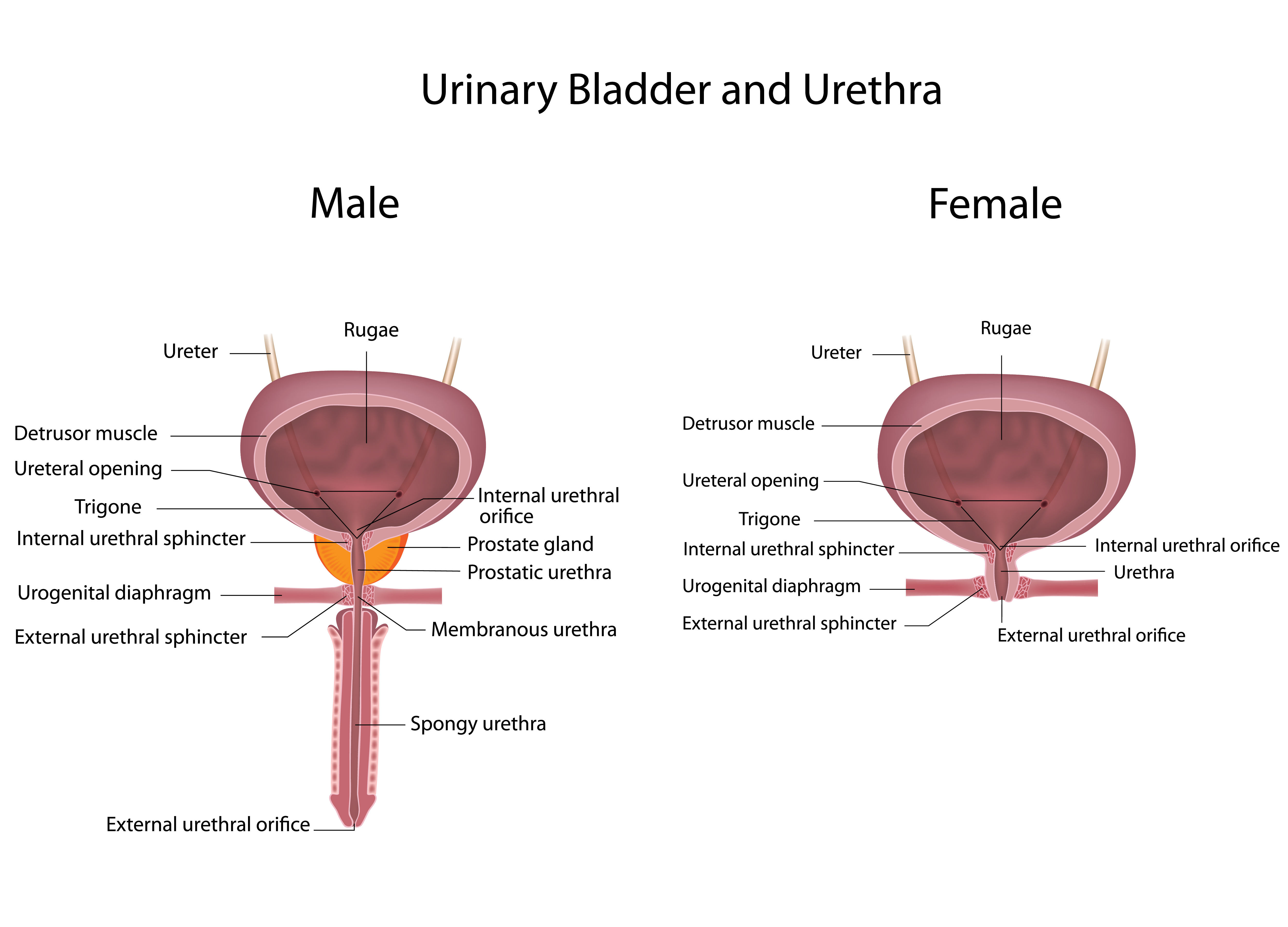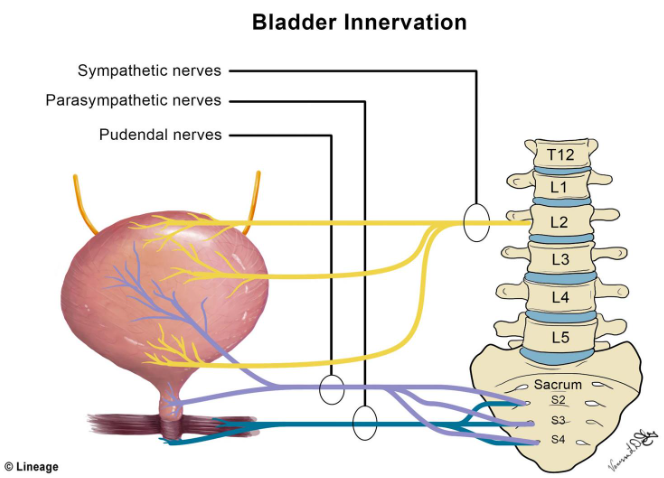Makindo Medical Notes"One small step for man, one large step for Makindo" |
|
|---|---|
| Download all this content in the Apps now Android App and Apple iPhone/Pad App | |
| MEDICAL DISCLAIMER: The contents are under continuing development and improvements and despite all efforts may contain errors of omission or fact. This is not to be used for the assessment, diagnosis, or management of patients. It should not be regarded as medical advice by healthcare workers or laypeople. It is for educational purposes only. Please adhere to your local protocols. Use the BNF for drug information. If you are unwell please seek urgent healthcare advice. If you do not accept this then please do not use the website. Makindo Ltd. |
Anatomy of the Bladder
-
| About | Anaesthetics and Critical Care | Anatomy | Biochemistry | Cardiology | Clinical Cases | CompSci | Crib | Dermatology | Differentials | Drugs | ENT | Electrocardiogram | Embryology | Emergency Medicine | Endocrinology | Ethics | Foundation Doctors | Gastroenterology | General Information | General Practice | Genetics | Geriatric Medicine | Guidelines | Haematology | Hepatology | Immunology | Infectious Diseases | Infographic | Investigations | Lists | Microbiology | Miscellaneous | Nephrology | Neuroanatomy | Neurology | Nutrition | OSCE | Obstetrics Gynaecology | Oncology | Ophthalmology | Oral Medicine and Dentistry | Paediatrics | Palliative | Pathology | Pharmacology | Physiology | Procedures | Psychiatry | Radiology | Respiratory | Resuscitation | Rheumatology | Statistics and Research | Stroke | Surgery | Toxicology | Trauma and Orthopaedics | Twitter | Urology
Related Subjects: |Anatomy of the Glomerulus |Anatomy of the Bladder
The bladder is a hollow, muscular organ located in the pelvis that stores urine produced by the kidneys before it is excreted from the body. It can expand significantly to accommodate varying volumes of urine and contracts during urination to expel the stored urine through the urethra.
Anatomy of the Bladder
- Location :
- The bladder is situated in the pelvic cavity, posterior to the pubic symphysis and anterior to the rectum in males, and anterior to the uterus and vagina in females.
- Structure :
- Apex :
- The pointed top part of the bladder, directed towards the anterior abdominal wall.
- Base (Fundus) :
- The wider, posterior part of the bladder, which rests against the rectum in males and the vagina in females.
- Body :
- The main, central portion of the bladder that expands to store urine.
- Neck :
- The narrow, inferior part of the bladder that connects to the urethra.
- Trigone :
- A triangular area on the internal surface of the bladder base, delineated by the openings of the ureters and the urethra.
- Apex :
- Layers :
- Mucosa :
- The innermost layer lined with transitional epithelium that allows the bladder to expand and contract.
- Submucosa :
- A layer of connective tissue that supports the mucosa.
- Detrusor Muscle :
- A thick layer of smooth muscle fibers that contract during urination to expel urine.
- Adventitia/Serosa :
- The outermost layer of connective tissue. The superior surface of the bladder is covered by peritoneum (serosa).
- Mucosa :

Vascular Supply of the Bladder
- Arterial Supply :
- Primary blood supply is from the superior and inferior vesical arteries, branches of the internal iliac artery.
- In females, the vaginal artery also contributes to the blood supply.
- Venous Drainage :
- Venous blood is drained by the vesical venous plexus, which empties into the internal iliac veins.

Neural Supply of the Bladder
- Sympathetic Innervation :
- Originates from the hypogastric plexus (T11-L2), which relaxes the detrusor muscle and contracts the internal urethral sphincter to promote urine retention.
- Parasympathetic Innervation :
- Provided by the pelvic splanchnic nerves (S2-S4), which contract the detrusor muscle and relax the internal urethral sphincter to facilitate urination.
- Somatic Innervation :
- Via the pudendal nerve (S2-S4), which controls the external urethral sphincter, allowing voluntary control of urination.
Physiology of the Bladder
- Storage Phase :
- The bladder fills with urine produced by the kidneys, which is transported via the ureters.
- During filling, the detrusor muscle relaxes to accommodate increasing volumes of urine, while the internal and external urethral sphincters remain contracted to prevent leakage.
- Voiding Phase (Micturition) :
- When the bladder reaches its capacity (approximately 400-600 mL), stretch receptors in the bladder wall send signals to the brain, creating the urge to urinate.
- The micturition reflex is initiated, involving the relaxation of the internal and external urethral sphincters and contraction of the detrusor muscle.
- Urine is expelled from the bladder through the urethra and out of the body.
Clinical Relevance
- Urinary Incontinence :
- Involuntary leakage of urine due to factors such as weakened pelvic floor muscles, nerve damage, or overactive bladder.
- Urinary Retention :
- Inability to empty the bladder completely, often due to an obstruction or nerve dysfunction.
- Cystitis :
- Inflammation of the bladder, usually caused by a bacterial infection (urinary tract infection).
- Bladder Cancer :
- Malignancy arising from the bladder's epithelial lining, often presenting with haematuria (blood in the urine).
Summary
The bladder is a vital organ in the urinary system responsible for storing and expelling urine. Its structure includes several layers and regions that facilitate its functions, supported by a rich vascular and neural supply. Understanding bladder anatomy and physiology is essential for diagnosing and managing various urinary conditions, ensuring proper urinary function and health.